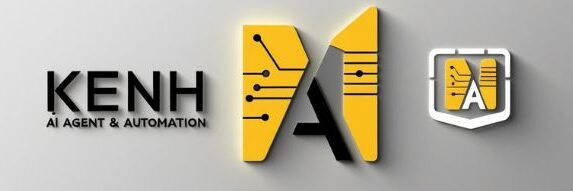Boost Productivity with AI Workflow Assistants
Introduction
In today’s fast-paced digital environment, staying productive requires more than human effort alone. AI-powered workflow assistants are stepping in as intelligent partners, helping automate repetitive tasks, organize information, and enhance decision-making.
This article explores how AI workflow assistants are redefining modern productivity. We’ll uncover their key components, real-world applications, a case study, challenges, and what the future holds.
What Are AI Workflow Assistants?
Definition and Purpose
AI workflow assistants are software agents powered by artificial intelligence that streamline, automate, or augment human workflows. These assistants can analyze data, make decisions, and interact with various digital tools to help users complete tasks more efficiently.
Unlike traditional software, AI workflow assistants are adaptive, context-aware, and increasingly autonomous, offering support beyond simple scripts or macros.
Background
The rise of large language models (LLMs) like GPT-4, Claude, and open-source models has enabled developers to build intelligent assistants that go beyond chat. Tools such as Zapier AI, AgentGPT, AutoGPT, and Relevance AI represent a new generation of workflow agents.
Their mission: remove friction from your day-to-day tasks—whether you’re managing projects, responding to customers, or organizing files.
Key Components of AI Workflow Assistants
1. Language Models (LLMs)
Powerful LLMs serve as the brain, understanding context, generating responses, and orchestrating actions.
Popular choices include:
GPT-4 (OpenAI)
Claude (Anthropic)
Mistral and LLaMA (open source)
2. Task Orchestration
Agents like AutoGPT or CrewAI deconstruct user goals into smaller tasks and execute them autonomously.
3. APIs & Tools Integration
Assistants interact with calendars, CRMs, emails, cloud storage, and even code editors using APIs and third-party plugins.
Example:
A sales assistant might connect to HubSpot, Gmail, and Notion to manage leads.
4. Memory and Context Handling
With vector databases (like Pinecone or Weaviate), agents remember past tasks, documents, or conversations, enabling persistent assistance.
5. User Interface (Optional)
Some workflow assistants operate in the background, while others have dashboards, chatbots, or browser extensions (e.g. Relevance AI Copilot or ChatGPT with Plugins).
Real-World Applications
AI workflow assistants are being adopted across industries:
Project Management
Assistants like Motion AI and Notion AI auto-schedule meetings, assign tasks, and summarize updates.
Content Creation
Marketing teams use Jasper AI or ChatGPT to brainstorm, outline, write, and publish content across channels.
Email & Calendar Management
Tools like Superhuman AI and x.ai draft emails, summarize conversations, and auto-schedule meetings with minimal input.
Coding and QA
Developers integrate GitHub Copilot, OpenDevin, or Cursor AI into their workflows to review code, fix bugs, and even write documentation.
Data Analysis
Assistants powered by ChatGPT + Code Interpreter or Claude handle spreadsheets, generate insights, and visualize data in seconds.
Case Study: AI Agent for Customer Service
Company: NeoCommerce (Fictional)
Challenge: High email volume and customer tickets were overwhelming their support team, especially outside office hours.
Solution: NeoCommerce implemented an AI workflow assistant built with LangChain + GPT-4, integrated into Zendesk and Gmail.
Features:
Ticket triage based on urgency
AI-powered responses to common issues
Escalation to human agents for complex queries
Customer sentiment analysis
Results:
65% of tickets auto-resolved without human input
Response time dropped from 4 hours to 8 minutes
Saved ~$6,000/month in staffing costs
Challenges and Considerations
1. Data Privacy and Compliance
Workflow assistants may access sensitive data. Make sure tools comply with regulations like GDPR, HIPAA, or SOC 2.
2. Model Reliability and Hallucination
LLMs may generate incorrect information. Always pair them with verification steps in critical workflows.
3. Tool Overload
Too many overlapping assistants can create noise. Consolidate efforts into unified workflows to avoid complexity.
4. Integration Complexity
Not every workflow can be automated out-of-the-box. API limitations, inconsistent data, and team training may slow implementation.
Future Outlook
AI workflow assistants are evolving rapidly. Here’s what the next wave may bring:
1. True Multi-Agent Collaboration
Frameworks like MetaGPT and MCP allow agents to function as departments—one for strategy, one for execution, and another for quality control.
2. Natural Language Automation
You’ll soon be able to say “Plan my week and email updates to the team,” and an agent will do it—all via natural language.
3. Edge & Local Deployment
Offline, on-device assistants will offer fast, private task automation—ideal for enterprise security needs.
4. Specialized Vertical Agents
Expect agents tailored for:
Legal: Contract review, case research
Healthcare: Patient intake, diagnostics
Finance: Reporting, forecasting
Education: Personal tutoring and grading
Recommended AI Workflow Assistants (You Can Use Today)
| Tool | Use Case | Link |
|---|---|---|
| Zapier AI | Automate 6,000+ apps | https://zapier.com/ai |
| AgentGPT | No-code autonomous agent | https://agentgpt.reworkd.ai |
| AutoGPT | GitHub-based workflow agent | https://github.com/Torantulino/Auto-GPT |
| LangChain | Build AI agents with memory | https://www.langchain.com |
| Relevance AI | Workflow copilots for teams | https://relevance.ai |
| Motion | Auto-schedule + productivity | https://usemotion.com |
| ChatGPT + Plugins | End-to-end workflow via chat | https://chat.openai.com |
How to Start Boosting Productivity Today
Map Your Workflow
Identify tasks that are repetitive, time-consuming, or rule-based.Pick the Right Tool
Choose based on ease of integration, pricing, and AI model quality.Integrate and Test
Start with one assistant in a specific department—like marketing, customer support, or HR.Optimize with Feedback
Monitor usage, accuracy, and satisfaction. Refine prompts and tool settings accordingly.
Final Thoughts
AI workflow assistants are no longer a luxury—they’re a competitive necessity. From solopreneurs to enterprise teams, these tools unlock hours of saved time and exponential productivity gains.
The best part? You can start using most of them today, without writing a single line of code.
Want to master AI tools and build your own agents?
👉 Join our recommended AI course now and take your skills to the next level.

